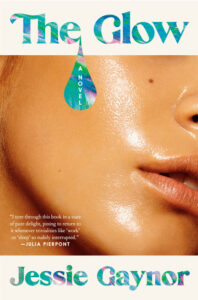This first appeared in Lit Hub’s Craft of Writing newsletter—sign up here.
If you’ve ever tried to walk somewhere with a toddler, you’ll have a sense of what reading the first draft of my novel was like: Despite the promise of a destination, you are forced to stop to examine every stoop, every tree, every rock, every gum wrapper that looks like a rock, which naturally leads to a meditation on the purpose of gum itself. This fixation on minutia—characteristic of both toddlers and poets—is beautiful in the right context (truly, why is gum?). It is less beautiful when you actually need to get somewhere.
When I started writing a novel, I knew how to write like a poet. I loved tinkering with sentences and paragraphs, trying to find the most evocative verb, the truest and most surprising metaphor. Character development seemed to flow from the words, but the trouble was, I couldn’t figure out how to make my quippy, meticulously described cast move anywhere.
In the first draft, I got around this by having them sit around remembering things. Memories can, of course, be a mechanism for moving a plot along, but in my case the things they remembered followed poet logic—which is to say, their relevance to the story was largely theoretical.
There’s an old Onion article I love: “Poet Takes Extra 5 Minutes to Vague Up Poem.” When my agent read my first draft, she had a lot of questions. Actually, she had one question: Why? It turned out that by zeroing in on the micro of my story, I had inadvertently vagued up the macro. Why was my protagonist so afraid of losing her job? Why was she so willing to leave the life she’s built and move to a farm in New Jersey with two odd—if hot—strangers? Why was she so peevish?
Answering the why in a straightforward manner not only gave my story momentum, it also helped create a shape for the inevitable digressions.
Why would I answer any of those questions directly when I could write a ten-page digression about jury duty instead? Because, as it turned out, answering the why in a straightforward manner not only gave my story momentum, it also helped create a shape for the inevitable digressions. The more succinctly I could describe the why, the more defined my characters and story became.
Like the question of why my protagonist, Jane, was so afraid of getting fired. To me, the answer was obvious: losing her job would leave her feeling unmoored and afraid. She would have to find another, which would be difficult, and until then, she would have to live on her savings. She might not be able to afford her life. She might experience anxiety and discomfort.
This is all true, of course, but it’s also so many words. What if she was afraid to lose her job because she had an enormous amount of medical debt? Even a character largely defined by ambivalence required specificity of the why; the why is what moved her from one place to the next.
One of my favorite novels, Evan S. Connell’s Mrs. Bridge, functions somewhat as a compendium of digressions, with each chapter a discrete episode in the life of the titular character. Still, Connell attends to the why in a way that is both straightforward and nuanced. Here’s how he opens chapter 37: “Mr. and Mrs. Bridge were giving a party, not because they wanted to, but because it was time.” Not only do we understand why the thing is happening, we understand something essential about both characters: they do the things they’re supposed to do, whether or not they like them. That simply stated fact creates so much action, not only in the chapter, but in the novel.
I will always love a good digression—please, please, tell me about the worst date your protagonist has ever been on!—and I will always move through fiction, to some degree, like a toddler on a walk. But a love of the micro need not preclude attention to the macro. The toddler has motivations, too: Finding out if that tall tree is the tallest tree that ever existed! Picking out the perfect triangle-shaped rock to put on the windowsill with all the triangle-shaped other rocks! Checking to see if the gum wrapper still has gum in it! Because, really, what could be better than the possibility of gum?
__________________________

The Glow by Jessie Gaynor is available now via Random House.
